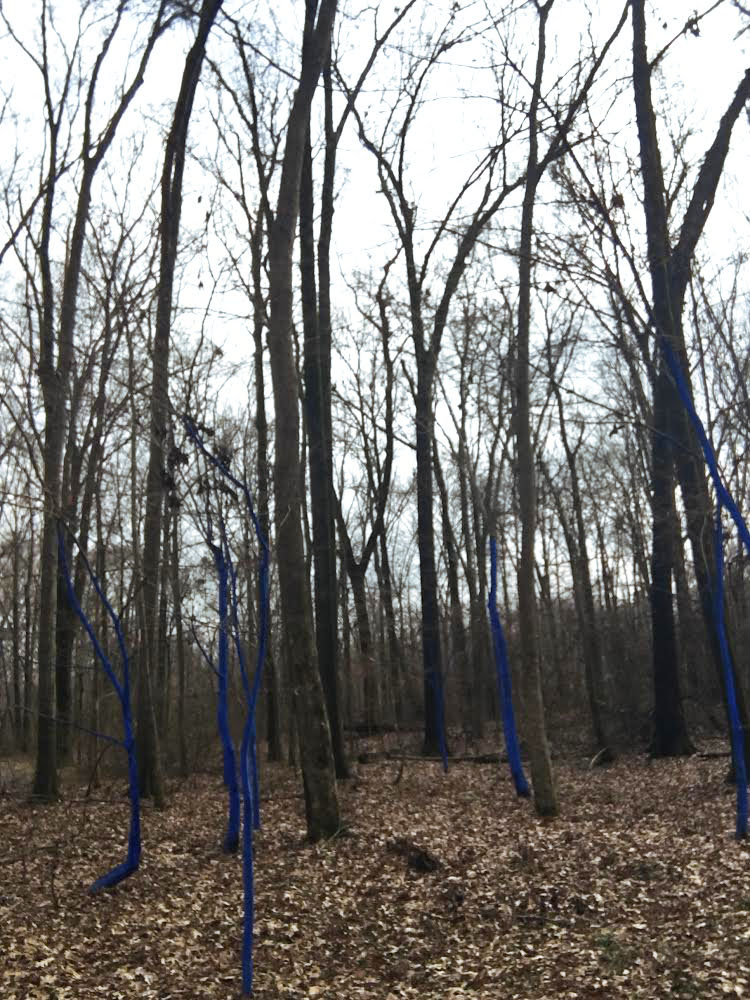Three outdoor enthusiast groups share the many nerdy wonders of Memphis nature
Growing up in Memphis, one of the most forested cities in the South, if not the United States, I have developed a fondness for nature.
Dad took my sisters and me for regular walks, enlightening us about all these green spaces. Sometimes, it was just an overgrown vacant lot. But we went for hikes, too, along the Old Growth Trails in Overton Park. There, I admired tall poplars, rich oaks, and sweetly-scented hickories. Ferns and ivy tickled my hands. It became a refuge.

Back in college, I would find myself roaming the Montana hills and valleys, just breathing in the Douglas pines and arrow leaves whenever I had a bad day. So, I reached out to Queer Memphis Hikes, curious if they shared that solace.
“Nature doesn’t judge who you are or how you show up,” Jazmin and Iris of Queer Memphis Hikes tell me.
Jazmin and Iris said going for regular hikes helps them to tune in to themselves and each other. Some of the things that stand out to them have been the many ecological features endemic to the Mid-South’s green history.
“Like, woah,” the two exclaim. “Look at that cool rock! How many million years ago was it formed?” Or, even, “Why do swamp oaks have those weird but funky exposed roots?”
Queer Memphis Hike members are either amateurs or experts, many of which are mycologists and paleontologists who are familiar with the local plants and wildlife and can even break down the small animal tracks around our feet as we walk.
“Some point out mushroom varieties at T.O. Fuller State Park. Other members track native flowers and plants. We’ve even had entomologists give us insights about the critters above our heads. It’s fascinating how people interact with nature, some even stopping to take photos, able to capture small changes in our landscape,” they said.

The hiking group has spent time around Meeman-Shelby, going out to explore the trails in the scorching summer or cool spring and fall mornings. But perhaps soon, they’ll check out
Konstantin Dimopoulos’s new exhibit Blue Trees along the Wolf River Greenway.
“Nature doesn’t judge who you are or how you show up.”
Dimopoulos, the visual artist responsible for Blue Trees, hails from a desert in Egypt, where he did not see rain until he was 5.
“It’s interesting,” says Dimopoulos, “that the Sahara, and most parts of now-desiccated northern Africa, had once been green and alive, pocked with lakes, rivers, grasslands, and forests. So many places change quickly.”
While living in Colorado, Dimopoulos learned about deforestation caused by the mountain pine beetle.
“One in 14 trees are dead in Colorado,” he informs me. “In fact, that number has increased to about 30 percent since 2010.”
Blue Trees is Dimopoulos’ response to this phenomenon. By painting the trees with non-toxic chalk paint, parts of that state’s ecology stand out. Since blue trees don’t exist in nature, it causes the hiker to stop and focus on the trees around them, admiring the beauty while it’s here.
“The reality is none of our forests or landscapes are free from ending up like deserts. We must become aware and work to preserve trees globally and locally,” he says.
Blue Trees grew from the Denver area of Colorado to all over the country, leading us to the exhibit along our Wolf River.
“A lot of people ask me why Memphis, Germantown? It’s a beautiful city, first of all. But, it’s the people we met who made the difference,” says Dimopolous.
People like Cat Peña, a Public Art & Design Manager in Memphis, who took a big risk to bring this work to our city.
“Rather than adapting nature to our cities, we should probably try adapting our cities to nature!”
“Initially,” Dimopolous admits, “we began the installation as a guerrilla work. But it has morphed and organically changed into an installation that brought inclusion with communities, with cities.”
Dimopolous isn’t alone in bringing art to nature, however. Local art company Belleau+Churchill worked alongside him to bring their project Tree Tones to fruition. They, just like their contemporary, try to bring the hiker’s attention to parts of our local environment.
“For us, nature is an inspiration but also a refuge. Nature gives us opportunities to slow down, reset, and refresh. Walking is important to us. We talk a lot on walks. Sometimes, it’s ideas. Sometimes, it’s about what we’re observing. Being in nature helps us practice mindful looking and listening.”
For their project, certain trees are set to specific tones inherent to those species themselves: Bald Cypress, Hackberry, Hickory, PawPaw, Sweetgum, and Water Oak. But, they aren’t just interested in bringing us to nature, but also nature to us. When I asked if they had any suggestions for how the city can adapt to nature, Belleau + Churchill suggested: “Rather than adapting nature to our cities, we should probably try adapting our cities to nature!”

“Nature is everywhere,” say Belleau + Churchill. “One thing that immediately stood out to us when we first moved to Memphis is the number of trees in neighborhoods and the size of those trees. There’s a direct correlation between the number of trees in a neighborhood and health outcomes for residents, with more trees equating to better health. Things like pollinator gardens or even replacing lawn grass with clover or native ground cover bring birds, butterflies, and bees and even reduce excessive lawn care. Even just mulching your leaves will invite nature back into the city. Leaving leaves on the ground over winter provides habitat for fireflies.”
One thing these Memphis Queer Hikes, Konstantin Dimopoulos, and Belleau + Churchill can definitely agree on is that nature is necessary to our lives, whether it’s through health, appreciation, art, or even our mental well being.
I’ll leave you with this quote from Robert Lydon provided by Dimopoulos: “We need all art as we need all nature; there is a balance in both.”
And indeed, that is on display with the Blue Trees and Tree Tones installations, standing proudly at the blessed banks of our Wolf River.
Follow @queermemphishikes to learn more about their next hike this Sunday, March 24th at the historic T.O. Fuller Park!




